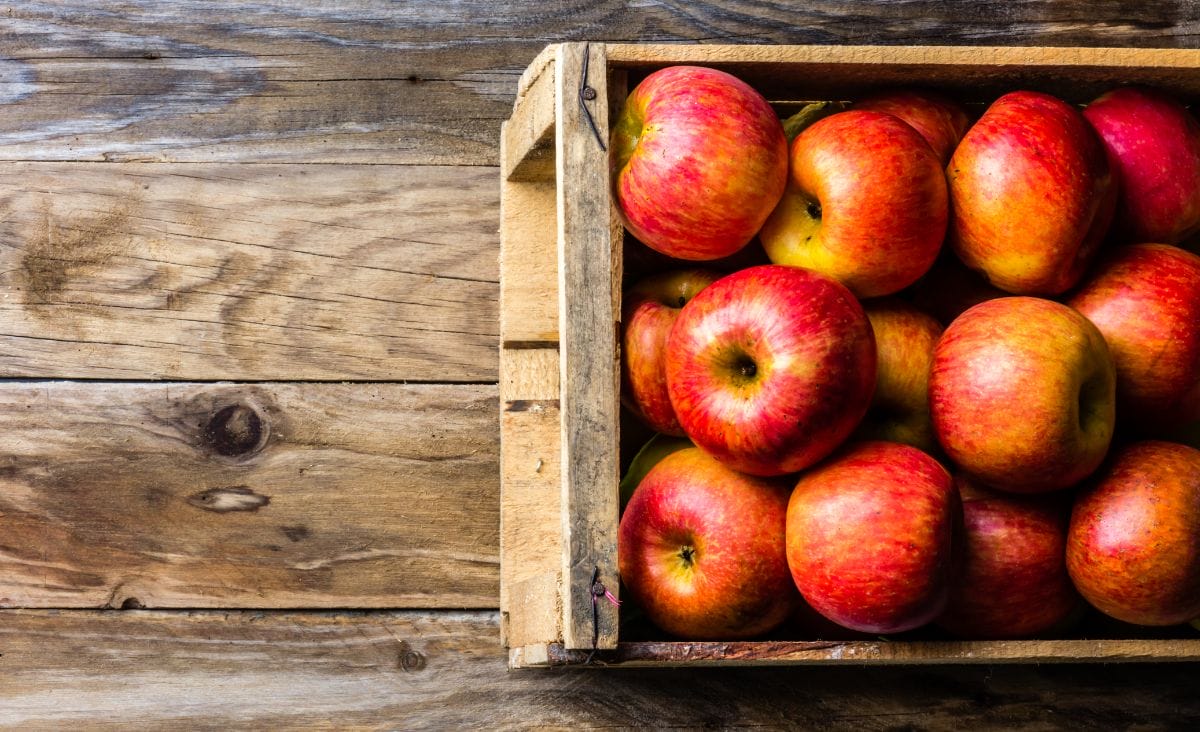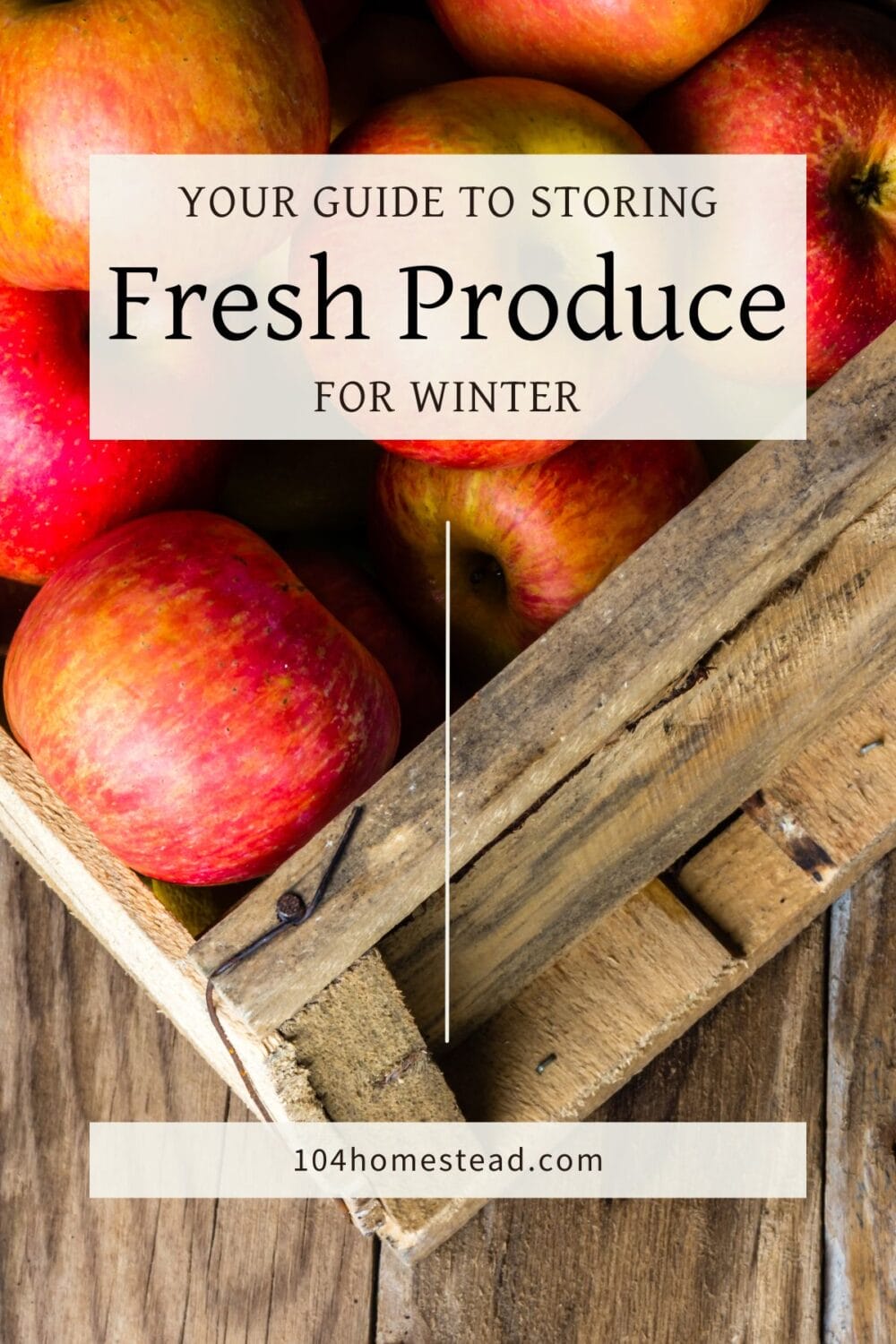Your Guide to Storing Fresh Produce Through Winter
Find out how to store fresh food so that it stays fresh all winter. With these tips, you can keep your fruits and vegetables crisp and tasty.

As winter gets closer, the summer and fall crops that were plentiful start to run out. As the colder months approach, people still want crisp vegetables and juicy fruits, which goes against the idea that canned or frozen foods are the only options. In the middle of winter, imagine biting into a fresh apple that tastes just like it did when it was picked from the tree.
If you know how to store fresh food the right way, this dream can come true. Besides the usual methods of freezing and canning, there are other ways to keep food fresh.
This post will show you tried-and-true ways to store your fruits and vegetables so they stay as healthy and colorful in the winter as they were when you picked them.
Understanding the Basics of Fresh Storage
For the best fresh food storage, it is important to keep things cool, make sure there is enough air flow, and keep the humidity levels right.
- Cool temperatures slow down the enzymes that cause foods to ripen and then break down, which makes fruits and vegetables last longer.
- The right amount of humidity is important. Too much humidity can cause mold and rot, while too little humidity can dry out plants and make them wilt.
- Ventilation helps get rid of ethylene gas, which many fruits give off as they ripen. This keeps nearby foods from going bad too soon.
All of these things work together to create an environment that mimics the natural dormancy of food, which keeps it fresh for longer.
Tip: Consider using silica gel packets in storage containers to reduce excess moisture and prevent spoilage.
Vegetables: From Root Cellars to Refrigerators
Root Cellars, Basements, and Garages
Root cellars have traditionally been used to keep vegetables like potatoes, carrots, and beets fresh all winter by keeping them cool, damp, and in the open air. Using the earth’s constant temperature, these underground spaces keep food in almost perfect storage conditions.
Homeowners today can create similar conditions by putting insulated boxes in cooler parts of the house, using basements, garages, or even garages. This will help them keep the right balance of coolness and humidity. For the same level of air flow as a real root cellar, you can store these vegetables in containers that let air pass through them or in materials like burlap.
What to Store in Your Root Cellar (or Equivalent)
- Potatoes: Store in a dark, cool place to prevent sprouting. Keep them in breathable burlap sacks for optimal ventilation. They can last up to 5-6 months.
- Carrots: Keep them in moist sand to mimic soil conditions, preventing them from drying out. Stored this way, carrots can last 4-5 months.
- Beets: Similar to carrots, store beets in damp sand to retain their moisture. They can stay fresh for 3-4 months.
- Onions: Store in a cool, dry, well-ventilated area. Hang them in mesh bags to promote air circulation. Onions can last up to 6 months.
- Garlic: Like onions, garlic prefers a cool, dry place with good airflow. Store in mesh bags or baskets. It can last up to 6-8 months.
- Apples: Store in a cool, slightly humid place in shallow trays to avoid bruising. Separating varieties can prevent faster-ripening types from affecting others. They can last 3-4 months.
- Pears: Keep at a cooler temperature than apples, but in similar humidity conditions. Pears can last up to 2-3 months when stored properly.
- Cabbage: Wrap in newspaper and store in a cool, humid area. It can last 3-4 months.
- Squash (winter): Store in a single layer, not touching, in a cool, dry place. Winter squash can last up to 6 months.
- Turnips: Store in moist sand or in perforated plastic bags in the crisper drawer of a refrigerator. In a cool cellar, they can last 4-5 months.
Refrigeration Tips
Keeping the right humidity level in the fridge is important for keeping leafy greens and cruciferous vegetables like broccoli, cauliflower, kale, and lettuce fresh. Put the greens in a storage bag that lets air flow through it after wrapping them in a damp paper towel. This will keep them moist but not wet, which will keep them from going bad.
Store cruciferous vegetables in plastic bags with holes in them so air can flow through them while keeping enough moisture in them to keep them crisp. These methods help manage moisture levels, ensuring that these vegetables stay fresh and nutritious for longer periods of time.
What to Store in Your Refrigerator
- Apples: When stored in a cool, humid, and ventilated environment in the fridge, certain apple varieties can last up to three to four months. Placing them in a plastic bag with holes for air circulation can extend their storage life.
- Carrots: If kept in a perforated plastic bag in the crisper drawer to maintain high humidity, carrots can last for several months. For best results, remove the tops and ensure they are dry before storing.
- Beets: Similar to carrots, beets can last for two to three months in the fridge if stored properly. They should be kept in a plastic bag in the crisper drawer to maintain moisture.
- Cabbage: When kept in a plastic bag in the crisper drawer to retain moisture, a whole head of cabbage can last for up to two months in the refrigerator.
- Celery: Wrapping celery in aluminum foil and storing it in the vegetable crisper can help it last for up to two months, as this method allows ethylene gas to escape and keeps the celery crisp.
- Parsnips: Like carrots and beets, parsnips can last for several months when stored in a plastic bag in the crisper drawer of the fridge.
For the best long-term storage results, it’s important to ensure that fruits and vegetables are dry and undamaged before storing, as moisture and bruises can lead to quicker spoilage. Additionally, checking stored produce periodically and removing any pieces that start to go bad can help prevent the spread of decay to other stored items.
A Special Word on Fruits
Ethylene Producers and Sensitives
Ethylene gas is a natural plant hormone that some fruits release to help them ripen. It speeds up the maturation process, which means that the fruit that produces ethylene ripens faster and any nearby produce that is sensitive to ethylene has a shorter shelf life. This can cause the food to go bad if it is not stored properly. It is important to store ethylene-producing and ethylene-sensitive fruits separately to lessen these effects.
Fruits that produce ethylene:
- Apples
- Avocados
- Bananas (when they start to color)
- Peaches
- Pears
- Plums
- Tomatoes
Fruits that are sensitive to ethylene:
- Broccoli
- Cucumbers
- Green beans
- Lettuce and other leafy greens
- Peppers
- Potatoes
- Watermelons
By storing fruits that produce ethylene away from fruits that are sensitive to it, you can keep your fresh produce from going bad too soon and extend its shelf life.
Innovative Storage Solutions
To keep fruits and vegetables fresh for as long as possible, many new storage options have been created. Each has its own benefits for keeping food fresh longer.
Produce Savers for the Refrigerator
These special containers are made to keep the right amount of oxygen and carbon dioxide inside. They also soak up extra ethylene gas, which slows down the ripening process. As a result, fruits and vegetables can stay fresh and crisp for much longer.
Vacuum-Sealed Containers
Vacuum-sealed containers and bags sealed with a FoodSaver keep oxygen from getting to the food inside by removing air from around them. This can slow down the deterioration and spoilage processes. For delicate fruits and leafy greens, this method is especially helpful because it maintains the texture and flavor of the food.
Sand or Sawdust Storage for Root Vegetables
Putting root vegetables like potatoes, carrots, and beets in boxes with clean sand or sawdust keeps them cool and moist, just like they would be in the ground. This method can greatly increase the storage life by stopping the vegetables from shrinking and keeping their natural humidity level while not encouraging rot or mold growth.
Frequently Asked Food Storage Questions
If you’ve found value in this blog post and enjoyed reading it, why not share it with your Pinterest community? Pin the image below and spread the love!

Putting away fresh food for the winter does not have to be hard. That is right, you can enjoy the crisp taste of your favorite fruits and vegetables all year long with a little work and the right techniques. Take advantage of the methods that work best for you and your space, and enjoy the fresh food, even when it is cold outside.
What’s your favorite winter storage tip for keeping produce fresh? Share your experiences and tips in the comments below!
